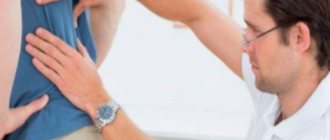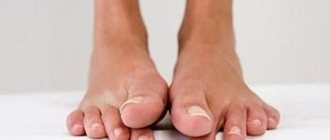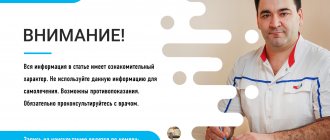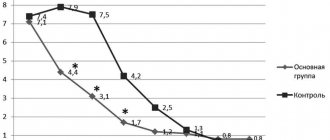One day hospital 3rd KO
Malykhin
Sergey Aleksandrovich
12 years of experience
First qualification category
Make an appointment
Lordosis in its original understanding is a physiological, that is, a necessary forward bend of the spine. Normally, it should be in both the lumbar and cervical regions. But often this word is used when they want to talk about pathological changes - too pronounced or, on the contrary, smoothed lordosis. This problem can be acquired, as well as congenital - it occurs in different age groups, and often depends on the person’s lifestyle. We will talk about the pathological condition of the spine.
Symptoms
In fact, there are not many common symptoms of lordosis of the lumbar or thoracic spine. We are talking about signs that relate to both smoothed and pronounced curvature. These symptoms include:
- Pain that is localized in the neck and lower back. Most often they manifest themselves when bending, bending and turning. Sometimes these pains can spread to other parts of the body - for example, the patient feels as if something is “shooting” in the arm or chest.
- Visual changes in normal curves - they become more pronounced. For example, with lumbar lordosis, the pelvis seems to be strongly twisted backwards.
- It feels like your legs and arms are going numb and you have goose bumps all over them. The same feeling can be observed in the lower back, depending on where the problem is located.
- General lethargy, constant fatigue. This is due to the fact that the load on the internal organs is distributed incorrectly and different systems of the body begin to give initially minor, but generally unpleasant symptoms.
There are also individual symptoms of lordosis, which are associated with its severity or smoothness. When it comes to hyperlordosis, the signs are:
- Buttocks sticking out back and a stomach that seems to “fall out” forward. Even if a person sucks in his stomach, it still remains round.
- Open leg position.
- Inability to sleep on the stomach in a position where the spinal column is aligned. In such a situation, the patient usually experiences severe pain.
- Constant tension in the lumbar region, she cannot relax.
- Difficulty bending forward
- Visual changes. You can conduct a simple test: if a person with hyperlordosis lies on the floor, then the distance between the floor and his lower back will be very large.
Hypolordosis also has its own characteristic signs, that is, when the position of the spinal column is flattened where there should be a natural, physiological curve. Then we are talking about the following symptoms:
- Pain in the lower back, feeling of numbness in the lumbar region.
- Flat appearance of the lower back. If a person lies on the floor, there will be almost no distance between the lower back and the floor.
- Quick back fatigue when walking or standing.
All of the listed symptoms also appear with lordosis of the cervical spine, but here local pain and a feeling of discomfort are added when turning the head or tilting it.
How lordosis becomes a pathology
A person normally has two lordosis. One of them is the cervical one. The second is lumbar. Located, respectively, below, in the lumbar region, it represents a deflection of the vertebral arch inward. Pathological lordosis is not such a rare phenomenon, occurring either congenital or acquired as a result of lifestyle, overload, or disease.
Lordosis
If the lower back bends excessively, taking lordosis beyond the norm, this becomes the cause of pain and leads to various diseases of the spine.
By the way. Very often, lumbar lordosis begins in women around the age of thirty, during pregnancy. When they are pregnant, their posture changes, the center of gravity shifts, and the spinal deflection increases to lighten the weight of the heavy belly.
Causes in adults
Since the reasons for the development of lordosis of the thoracic spine, as well as other parts, differ in adults and children, we will talk about this separately.
Problems in adults are usually caused by injuries to the back, hip joints, weak muscles, and bone diseases. Excess weight puts a serious strain on the spine, which is why the curvature can go beyond the physiological limits. Also, the cause of lordosis can be a lack of various microelements, vitamins and protein, or spinal tumors. The habit of sitting, standing, lying in one way or another also affects the position of the back.
Preventive measures
Is it possible to prevent lumbar lordosis? If it’s not innate, then it’s fine. The best prevention is considered to be an active lifestyle, monitoring your health, following nutritional rules, and exercising.
Exercises are done in the morning, and regularly, and not occasionally. Going to the gym or fitness club is also welcome, you just need to monitor the loads and follow the technique of working with equipment.
Exercising in the morning as a way to prevent spinal curvature
Prevention will be helped by following a regimen, healthy eating, proper rest and sleep (for which you need to purchase a hard mattress and an orthopedic pillow).
Adequate rest on an orthopedic mattress and pillow helps maintain spinal health
If your job is sedentary, be sure to control your posture. In between, hang on the horizontal bar or otherwise warm up.
Charging at work
Treatment
To treat this disease, a whole range of measures is usually selected, including:
- Use of different medications. These are anti-inflammatory, painkillers, B vitamins, glucocorticoids, drugs to eliminate muscle spasms, as well as local gels, ointments and compresses.
- Physiotherapy. This includes electrophoresis, paraffin baths, acupuncture, treatment with ultrasound and magnetic fields, various water procedures: baths, special showers.
- Therapeutic physical education, special gymnastics. It is prescribed during a period when the exacerbation has been relieved and the patient does not experience serious pain. Specific exercises to correct lordosis are prescribed by a specialist - you should not search the Internet for the first complexes you come across and try to perform them. This can harm yourself.
- Use of special orthopedic devices. The patient may be prescribed a posture corrector, a corset, a bandage - something that will support the back, relieve tension from certain muscles and help align the spine according to physiological parameters.
- Massages and manual therapy. Both when treating spinal lordosis must be trusted to very experienced doctors. Under no circumstances contact ordinary massage therapists - there are often cases when unqualified people only aggravate the patient’s condition.
- Spinal traction using weights or when working with your own weight. This procedure is also performed by a professional physiotherapist.
- Operation. It is prescribed in extreme cases when the patient’s serious condition cannot be alleviated by other means. At the moment, spinal surgeries entail certain risks, and therefore there are serious reasons for carrying them out.
The effectiveness of treatment depends not only on the prescribed course, but also on how much the patient himself participates in the process - whether he does special gymnastics every day, whether he follows all the doctor’s recommendations.
At the Meditsina JSC clinic in Moscow, you can receive effective treatment for lordosis, depending on the characteristics of the pathology. We have experienced therapists, surgeons, orthopedists and neurologists who can help with this problem. If you are experiencing back and neck pain, the first thing you should do is make an appointment with a neurologist. When the disease does not bother you, but you know about its existence, you can contact a therapist who will give further instructions.
Species differences
There is a certain set of parameters that gives the characteristics of lumbar lordosis. Based on these parameters, the disease is divided into types.
Table. Division into types.
| Separation | View 1 | View 2 |
| Cause of occurrence | Primary - in which a bend that goes beyond the norm is caused by the growth of any formation (of any quality). It may also be a consequence of vertebral pathology acquired from birth. | Secondary - caused directly by mechanical stress to which the spine has been subjected. |
| Appearance time | Congenital - detected in early childhood, but the anomaly is usually already present at birth or appears during childbirth. | Acquired - development begins under the influence of external factors, such as trauma, spinal diseases or tumor formations. |
| By type of deviation | Hyperlordosis - the deflection has an angle that is too large. | Hypolordosis - the deflection is less than normal or smoothed out (absent at all). |
Types of Lordosis
Prevention
Preventive measures should include the necessary changes in lifestyle and the development of new habits:
- use of an orthopedic mattress;
- maintaining correct posture while working, walking, resting;
- it is necessary to sit on a chair, leaning on the back of the chair with your entire back, without loading the lumbar region;
- stand on two legs with an even distribution of body weight;
- you should lift the load without jerking, bending your legs at the knee joints and squatting slightly;
- normalization of the diet - it should be balanced;
- Regular swimming and gymnastics classes are required.
A timely visit to a doctor at the first signs of the disease and a course of treatment selected individually for each patient, taking into account the degree of pathological changes, will help restore a full quality of life and avoid the dire consequences of spinal pathology - limitation of motor activity.
Sign up for consultation and treatment at the “YES Medical Center!” You can fill out the form on the website or by calling 8(812)323-15-03.
Our licenses for medical activities
All rights reserved by copyright law. No part of the contents of the site may be used, reproduced, transmitted by any electronic, copying or other means without the prior written permission of the copyright owner.
What is the danger of the disease
The spine is the foundation of the entire body. Any of its pathological changes have a detrimental effect on the functioning of individual organs and the body as a whole. Mainly organs in those areas where the curvature is localized are affected. Problems also affect the spine. Inflammation of the vertebrae, their destruction, prolapse, the appearance of hernias, osteochondrosis, deforming arthrosis with subsequent loss of performance are possible.
Scoliosis
This type is known in everyday life more than others. If, when viewed from the rear, the normal spine is straight, then with this pathology the person’s back will be curved to the right or left, and sometimes in several places at once.
Scoliosis is easy to detect in its early stages. It is enough to ask the person to lean forward and lower his arms freely. If asymmetry is noticeable, it's time to see a doctor. The doctor will be able to determine the rotation and torsion of the spine (how much it is twisted along its axis).
All parents should know that this deformity often begins and progresses during adolescence. This is a period of increased body growth. Moreover, in 8 out of 10 cases the exact cause of its occurrence is unknown. Girls are much more susceptible to postural distortion than boys.
Diagnostics
Making a diagnosis requires a number of activities:
- Questioning the patient, identifying symptoms, compiling a medical history.
- Determination of spinal mobility, its curvature, and developmental anomalies.
- Conducting a neurological examination.
- X-ray, which will help to accurately determine the degree of curvature.
There is a self-diagnosis method that can be done at home. It certainly won’t give exact results, but it will help you get your bearings. You need to stand with your back to the wall and try to stick your hand in the lumbar area between the wall and your back. The hand should move with difficulty.
Clinical case
What does this look like in practice? As an example, consider a clinical case of a child with thoracolumbar kyphosis. Age – 1 year, weight is below normal (8.5 kg). He developed mentally and physically in accordance with age standards: he began to hold his head up, sit down, and walk on time. Upon examination, attention is drawn to thoracolumbar kyphosis, the spinous processes of the thoracic and lumbar vertebrae form a convex posterior arch. History: pregnancy was threatened with termination in the 1st and 3rd trimesters, the child was born premature, and suffered from pneumonia in infancy. He was also diagnosed with complex combined heart disease. Low weight from birth. Burps after every feeding, often belching air. Considering the problems with the visceral organs, the osteopath’s work during the treatment session was aimed at relaxing the thoraco-abdominal diaphragm, and work was also carried out with the mediastinal organs - the pericardium and esophagus. Using gentle visceral techniques, the doctor relaxed the ligaments that pass from the internal organs to the diaphragm. In addition, work was carried out on the abdominal organs - the stomach and intestines. The main goal was to mobilize these organs, improve their motility and mobility, give them greater mobility and relax tense ligaments. Recommendations were also given for further diagnostic examination and resolving the issue of surgical removal of the heart defect.







